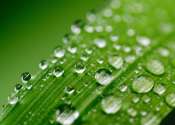These solar panels pull in water vapor to grow crops in the desert
Using a unique hydrogel, scientists in Saudi Arabia created a solar-driven system that successfully grows spinach by using water drawn from the air while producing electricity. The proof-of-concept design, described March ...
Mar 1, 2022
0
368









